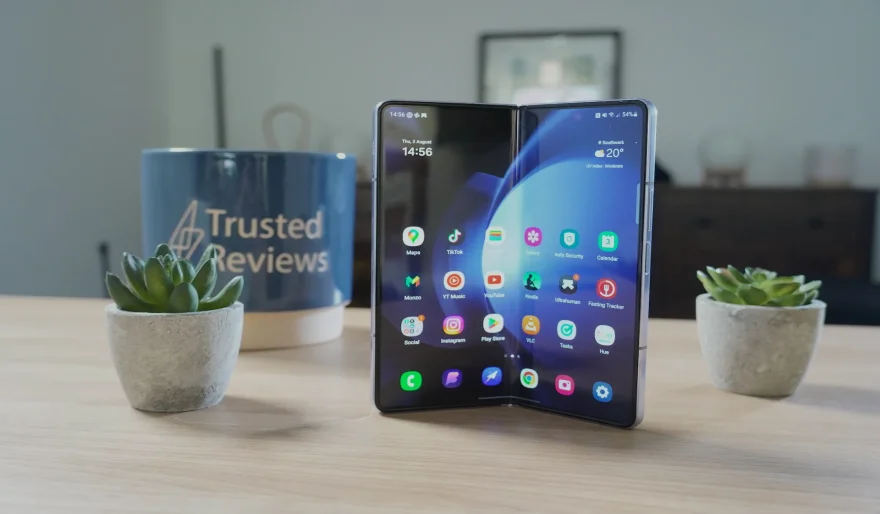How to schedule updates to avoid interruptions during phone usage?
14 min read How to schedule updates to avoid interruptions during phone usage? - written by Hamza Bose, Senior Content Marketer April 29, 2024 10:46
How to schedule updates to avoid interruptions during phone usage?
1. Introduction
It appears that the best way to address the updates is indeed to schedule them for a time when unexpected downtime is less likely to affect the end user. With a connection to the internet, a manufacturer's Android can easily find out when it will be okay to schedule updates without incurring disruptions to the owner's regular device usage. While cellular connections usually get their traffic controlled by carriers (which can throttle back what is considered heavy traffic), Wi-Fi connections are suited to updates as long as the user's profile can assume background data usage. An additional challenge the feature needs to address is how much notice is needed before a reboot.
Android gets its operating system and app updates frequently, but these updates generally ask for a system reboot in order to be installed. One big issue raised by users in this event is that planning to reschedule such reboots definitively avoids system interruptions caused by the operation, as these interruptions can be very unwelcome and unexpected. When unexpected, despite the ability to snooze the operation for about 1-3 hours, this situation occurs at the worst possible time, which is when we decide to finally make use of our mobile devices.
2. Importance of scheduling updates
As we all know, an updated device experiences fewer security problems or loss of performance. This is because all new versions usually include bug fixes, performance tuning, user enhancement features, and above all, updates to fix security vulnerabilities. Generally, most devices are programmed to release updates in cycles, which means planned release dates are set for the subsequent updates to ensure that users don't experience service interruptions as they often do if the updates are installed during unwanted or inappropriate times. Devices also need an internet connection as well as an electrical connection to ensure they have sufficient battery life to install updates. Note that these update cycles may involve 2-3 different updates daily, depending on the software, maybe a monthly-based security update or a quarterly update which coincides with major software updates.
A recent survey conducted by Security Magazine states that only 3 in 10 people always read a notification about an update on their mobile devices. This is despite the fact that almost 70% of people who own a mobile device often update it. The survey indicates that some people who don't read the update notice find it annoying, and there is also the fact that others do not know how to schedule it. This unwillingness to schedule updates has a few consequences. For example, 26% of people delay scheduling updates, and because of this, 30% of those who are interrupted during the update find the process frustrating. This statistic is worrisome and should create concern. Even though devices become established components of our life, not enough time is allocated to secure them. This becomes inclusive of everyday activities and during the night when devices are connected to the charger to be ready for action in the morning. The question is, how important is it to schedule updates?
3. Tips for scheduling updates effectively
3: Tips for scheduling updates effectively When adjusting the update settings, consider what works best for the product and your users' use case and goal. Keep in mind that some policies are not yet available to work with every product that uses Update for Google. For example, policies for Chrome may not work the same for Android. Therefore, it is important to check the operation and case with certain updates. As with all configurations, always test the settings introduced before applying them on a wider scope. In addition, keep in mind that when you move from version 1 of a policy to version 2, all clients that already have a version 1 setting within your domain or organizational unit will have the setting removed and replaced with SETUP.
1: How does the system work? Google Update policies allow customers to customize their update settings to suit their needs. When an update is available for a product under a policy, the Update server will pass on the client's preferences. If the update is not available for the client's preferences, the client will wait for the next update check when it has sent a new policy state. To check if a new policy is available the client may automatically check for policies on the management server but also the user may always request new policies through the cloud service (if the user eventually receives a new or updated policy, the policies previously sent will no longer be in use and lost per request), but policies deduced by another policy that has not been changed will not be lost).
Google Name (for example, applications for business or education designed to integrate with, work with, or access Google products).
Google Update for work only allows users to choose between different update channels: Developer, Beta, and Stable. It is possible to schedule automatic updates and later versions of the product. However, it is not possible to disable automatic updates using this service. For Chrome, security settings will always be updated if the major version of the product is updated (e.g. major version is 43.0.23352.25 security settings will be updated if the Google Chrome version is later than 44.0.2403.89). For mail, it is only possible to enable or disable automatic updates, and not set a preferred update, but we can choose when to apply updates we only received by leaving the product in work mode only (Updates derived from policies do not offer any notification or the option to postpone the updates)
Google Chrome (Google Chrome is Google's web browser.)
2: What are the settings I can update using Google Update policies? You can use Google Update policies to apply updates to the following Google settings:
4. Common challenges and solutions
Another common challenge was the amount of time it took for an update to complete. Both update and report participants noted this, where it was noted sooner by the update participant during the initial OS configuration. The time to complete an update is dependent on the size of the update and the performance capabilities of the device being updated. As the size of the update is not easily reduced, the remaining options are to speed up the update process and reduce the impact of the update on the device's performance. Regardless of the specific choice, an update process that takes a long time to complete is less than transparent. When providing an update, it is important to also provide disclosure on how long an update is expected to take. These estimates, regardless of their inaccuracy, help set appropriate expectations for how long a potential interruption may last. Additionally, it is important to maintain a user-device interaction during an update to ensure that the device is not seen as frozen or non-responsive.
During the survey and interviews, numerous challenges with updating were reported. The most common challenge was the potential for unexpected updates, sometimes resulting in an interruption during intended usage. Due to the nature of updates, the challenge was not easily overcome. We recommend scheduling updates to help users anticipate when potential interruptions may occur, while providing advanced notice on when updating is to occur. This recommendation assumes that users adapt their behavior based on the provided information.
5. Conclusion
Once we implemented the updated definitions for the update window, we conducted a study to understand users' receptivity to interruptions around the window. We unobtrusively collected information about users' mobile usage behaviors on a daily basis, covering 133 days, from 9 University of Glasgow students. Our student participants were chosen as they are perceived to be the most heavily reliant on their phones. The data from the study contributed to the deployment of "Nightly" updates, which operate during the phone users' least active times, thus providing the least hindrance. For times when the Nightly updates could not occur, we implemented the system of Adaptive updates – which use data from the usage study. We also explore the design implications of our work through the characterization of our update window and usage study data and offer preliminary insights into the delivery of updates to smartphones. Our study is complemented by the examination of smartphone app update specifics, specifically Google Play.
We have found that if the update window is defined as the times during the day when the user's phone screens are turned on, then 72% of all updates can occur without any additional burden placed on the user. Meanwhile, the vast majority of updates, 64%, can occur when the smartphone is free to download and then install any updated software from Google Play, even when the update window is at its most stringent and defined as small intervals every day.
The update window is defined as the times when the smartphone is able to download and then install the software from Google Play. The device must be switched off while an application is being installed, but it is free to operate while an application is being downloaded from Google Play. The combination of these three measures effectively poses a battery life-related constraint, so even when the window is critical, it does not prove to be a significant burden.
Many Android smartphone applications require updates to provide new functionalities and to fix any bugs. These updates are typically downloaded, installed, and applied automatically, provided the phone remains switched on during the update window. Any interruption to the update process can cause the installation to fail, leaving the phone in a potentially unusable state and necessitating a restore to manually repair.
User Comments (0)
Popular Apps










Editor's Choice









